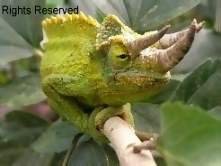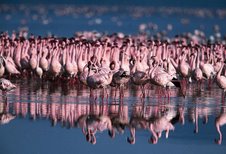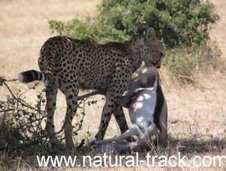Africa is changing at a rapid pace and human encroachment into wildlife reserves has continued to erase the traditional routes and wildlife migratory corridors. Coupled with development and massive changes of the way of life, the image of wildlife roaming free in the jungles of Africa is slowly getting expunged. Fortunately, Kenya in tropical Africa still holds on to its charisma of an open limitless land. It is one of the places in Africa that still prides in wildlife diversity and concentration.
One of these amazing places is Maasai Mara national reserve. With its ideal location; - south west of Kenya, 290 kilometers from Nairobi, Mara’s profusion of wildlife and remoteness implants memories in-buyable with money.
The wildebeest migration is a recent phenomenon with 60’s and 70’s marking the biggest boom with about 250,000 individuals. The number has since then risen gradually to the current population of over three million individuals. Add to it an estimated 1.5 million zebras, thousands of gazelles and hundreds of impalas and the result is one of the most magnificent scenes in the world. This massive display of ungulates attracts hundreds of big cats as the population provides abundant prey while the giant crocodiles lie in wait, patiently, as the herds come to cross the river or to drink.
Many have described it as the world’s biggest spectacle, while others have come back time and again, to witness this panoramic faction of wild animals’ itinerant freely through unspoiled savage wilderness. While the drama culminates, the air fills with clicks of cameras flicking tirelessly to capture this unique world re-known spectacle.
However, as the phenomena may seem to astound and amuse scores of visitors and conservationists, tally the Maasai community out of the glee. To them, the phenomenon is a big calamity as the wildebeests transmit diseases to their herds and poison the waters with their fetal sacs and also compete with their vast boran cattle herds for pasture and water.
This world famous migration is a circle of life which in simple terms means ‘there isn’t a start or an end’ but just where the herds are sited at a particular time subject to availability of pasture. The plains of Ngorongoro conservation Area in Serengeti are a favored spot as grass abounds and the wildebeest find a safe place to grace. It is also here that over five hundred thousand new calves are born and many are taken by the nearby waiting jackals or hyenas. Casually speaking, the gnus (wildebeest) go to Mara for ‘honeymoon’ and then proceed to Serengeti for breeding. The new born’ have little time to strengthen their legs since soon after they are born, the pilgrim" continues.
By April, the rains are over in Serengeti and the plains have dried up, thus these natural lawn mowers have to instinctually abandon the exhausted grasslands of southern Serengeti. They therefore gather and commence the extensive stride northwards and westwards to the already tall grass of the western corridor near the shores of Lake Victoria.
The pioneers of this pilgrimage are the majestic herds of zebras. They prefer the long shoot of the coarse grass thus leaving behind shorter grass favored by the wildebeests. In late June to July the mass start pouring into the Kenya’s Masai Mara reserve where fresh tender and mineral rich grass is already waiting. Here they meet the resident Mara populations which add up to a hundred and fifty thousand individuals. Also commonly referred to as the Loita plains herds, they spend most of the season northeast of Mara. When it gets dry, they pour into the interior of the Mara in search of greener pastures.
The migrating herds spend roughly three to three and half months in the Mara crossing through Sand River (a tributary of the Mara River) along the boundary of Kenya and Tanzania. They trek westwards and cross the Mara River and sometimes the Talek River. Usually, around this time, heavy rains on the Mau escarpments (Origin of the Mara River) fill the Mara River to the brim.
This is a good time to watch the trunk-looking Crocodiles, while they spectacularly anticipate and grasp the ‘imminent feast’. Finally, the gnus venture into the river! This gregarious coordinated behavior of the herds, usually teamed with zebras, creates an unimaginable scene – Just what the cameras have been waiting for!
They wander along the river looking for a convenient crossing point. This is a moment filled with tension for both the gnus and the audience. They survey for a less steep spot oblivious of the perceptible jeopardy. Finally, one takes courage and plunges into the river and magically the rest falls onto the footsteps and in one organized line cross the river.
In addition to the crocodiles’ merciless attacks, accidents also occur. The river's current can be too strong for some especially the young ones or simply, getting stuck between the rocks in the river and breaking limbs – a direct ticket to the jaws of the giant crocodiles. Finally, the crossing is done and the trek to their unknown (or known) destiny continues
In the month of October, they are already heading to Serengeti where the rains have treated the southern grasslands to lush, green carpet of rich grass. Once again, they are heading to the southern plains, where a new generation will be born to start the cycle of life all over again.
PKP-Kenia safari desk
Natural Track Safaris









No comments:
Post a Comment